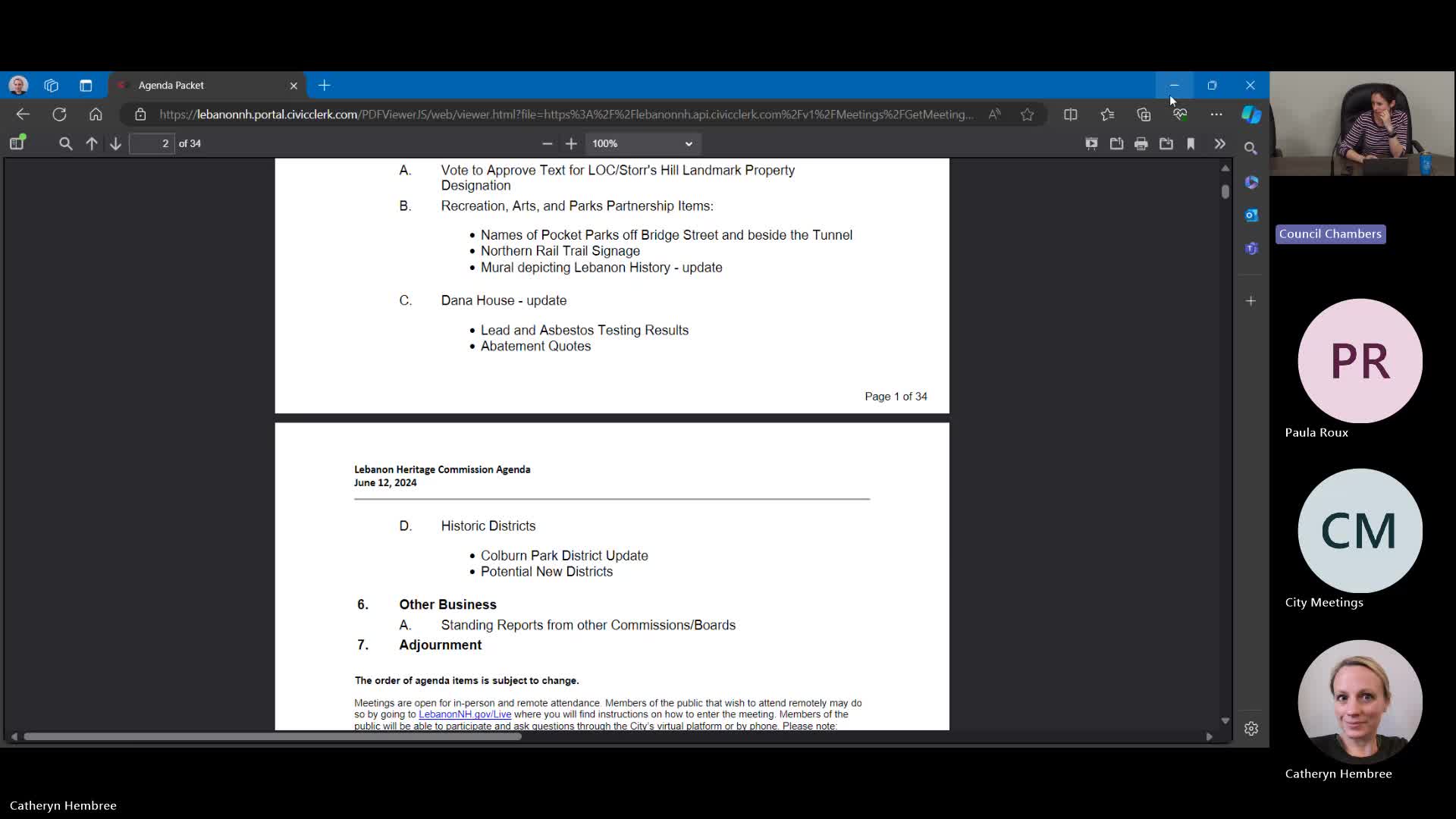Lead and Asbestos Testing Reveals Surprising Results
June 12, 2024 | Lebanon Board & Commissions, Lebanon, Grafton County, New Hampshire

This article was created by AI summarizing key points discussed. AI makes mistakes, so for full details and context, please refer to the video of the full meeting. Please report any errors so we can fix them. Report an error »

In a recent government meeting, officials discussed several key topics, including the results of lead and asbestos testing at the Dana House, the organization of historical artifacts, and updates on potential new historic districts.
The meeting revealed that lead and asbestos levels in the Dana House were lower than anticipated. Lead was primarily found in windows and doors, with a notably high concentration in an exterior door from the building's new section. Asbestos was detected only in 9 by 9 tiles, while the underlying flooring was clear. Officials are awaiting quotes for remediation work to clean the building.
Additionally, the meeting addressed the organization of numerous artifacts stored at the Dana House. A member noted that the historical society might be interested in reviewing these items, which include labeled boxes containing various historical objects. There is a proposal to display some of these artifacts in City Hall, provided they can be traced back to Lebanon's history.
On the topic of historic districts, a consultant is finalizing a draft boundary line expansion application for the public park district, which is expected to be filed soon. This will pave the way for potential zoning updates in future cycles. The discussion also touched on the relationship between national register historic districts and local zoning, highlighting the flexibility in designating historic areas without necessarily aligning them with national or state registers.
Officials emphasized the importance of considering new historic districts, especially in light of ongoing development in the city. They referenced a 2016 reconnaissance survey that identified potential future districts and structures eligible for national or state registration, including the Bank Street neighborhood and various other areas within the city. The meeting concluded with a call to action for further discussions on preserving Lebanon's historical sites amidst urban development.
The meeting revealed that lead and asbestos levels in the Dana House were lower than anticipated. Lead was primarily found in windows and doors, with a notably high concentration in an exterior door from the building's new section. Asbestos was detected only in 9 by 9 tiles, while the underlying flooring was clear. Officials are awaiting quotes for remediation work to clean the building.
Additionally, the meeting addressed the organization of numerous artifacts stored at the Dana House. A member noted that the historical society might be interested in reviewing these items, which include labeled boxes containing various historical objects. There is a proposal to display some of these artifacts in City Hall, provided they can be traced back to Lebanon's history.
On the topic of historic districts, a consultant is finalizing a draft boundary line expansion application for the public park district, which is expected to be filed soon. This will pave the way for potential zoning updates in future cycles. The discussion also touched on the relationship between national register historic districts and local zoning, highlighting the flexibility in designating historic areas without necessarily aligning them with national or state registers.
Officials emphasized the importance of considering new historic districts, especially in light of ongoing development in the city. They referenced a 2016 reconnaissance survey that identified potential future districts and structures eligible for national or state registration, including the Bank Street neighborhood and various other areas within the city. The meeting concluded with a call to action for further discussions on preserving Lebanon's historical sites amidst urban development.
View full meeting
This article is based on a recent meeting—watch the full video and explore the complete transcript for deeper insights into the discussion.
View full meeting
